An avid collector of 20th-century furniture from both sides of the Atlantic, the former Oliver Peoples creative director is trailblazing a unique, modernist-influenced interior design style.
From an outsider’s perspective, Milan and Los Angeles appear to sit at opposite ends of the cultural spectrum. The former, steeped in design culture past and present, is a somewhat grey and austere city from the outside, with moments of beauty waiting to be discovered inside its grand palazzos and ornate courtyards. Colourful and extroverted LA, on the other hand, lays all to bare. Thanks to its warm climate and prevalent entertainment industries, both public and private spaces open out to their exteriors, and to the world unashamedly.

For interior designer Giampiero Tagliaferri, who has lived and worked in both cities, there exists a common thread that can be strung between the two: Modernism. As the former creative director for eyewear brand Oliver Peoples, he has quickly shaped a distinct aesthetic for his recently founded interiors studio that combines elements of Milan’s post-war brutalist architecture and furniture, and LA’s cool, relaxed mid-century residences and indoor-outdoor sensibility. “There are basically three pillars of my aesthetic,” Tagliaferri told Effect. “One being ‘chic’. The next being ‘Brutalism‘. And the other is this sort of ‘modern, space-age California‘.”
Born in Bergamo, not far from Milan, Tagliaferri was immersed in the world of Gio Ponti, Carlo Mollino, Mario Bellini and the other maestros of 20th-century Italian design from a young age. “I definitely have a lot of design baggage in my head just by growing up in Milan,” he joked. “I‘m obsessed with those Italian post-war architects and designers. I grew up absorbing that.” He came to the creative industry himself from a slightly indirect path, first studying Economics, Management and Fashion Design at Università Bocconi, then working in the product management division for brands like Adidas and Luxottica, before relocating to LA and landing the lead creative role at Oliver Peoples. ”All of a sudden you‘re in charge, you have the possibility to really shape a vision for the brand across different areas, from product to communication, to store design,” Tagliaferri described of his position.
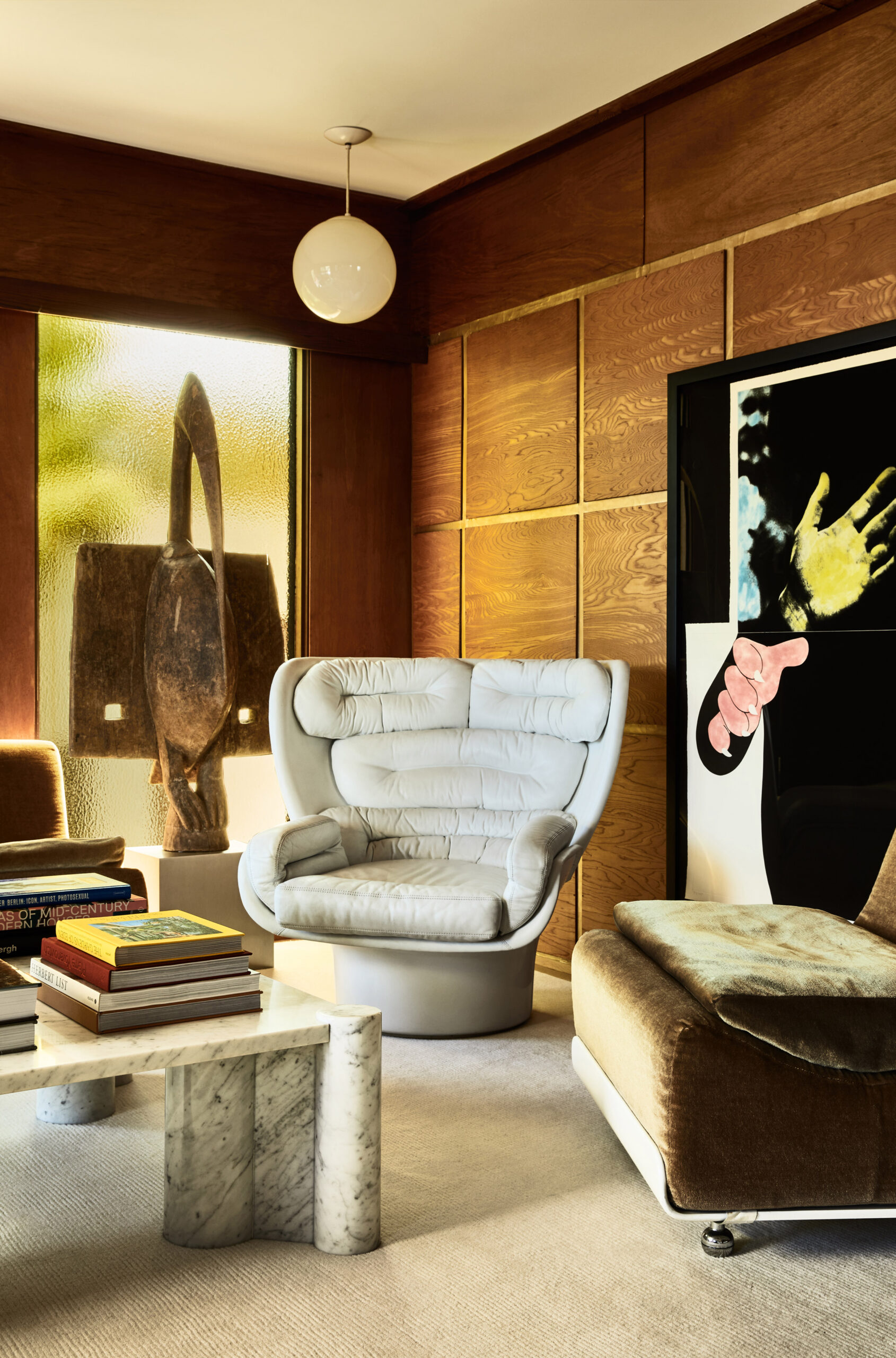
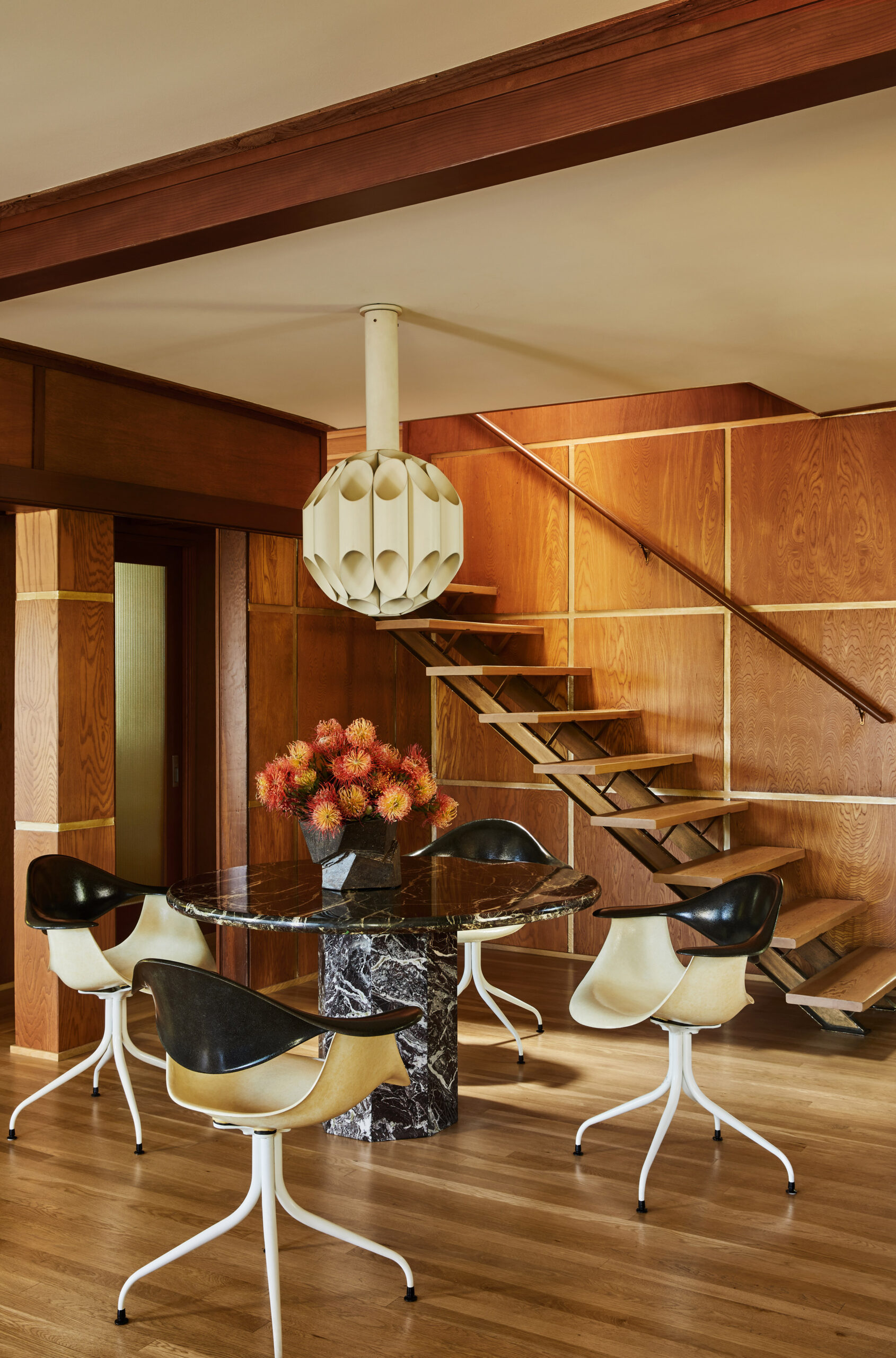
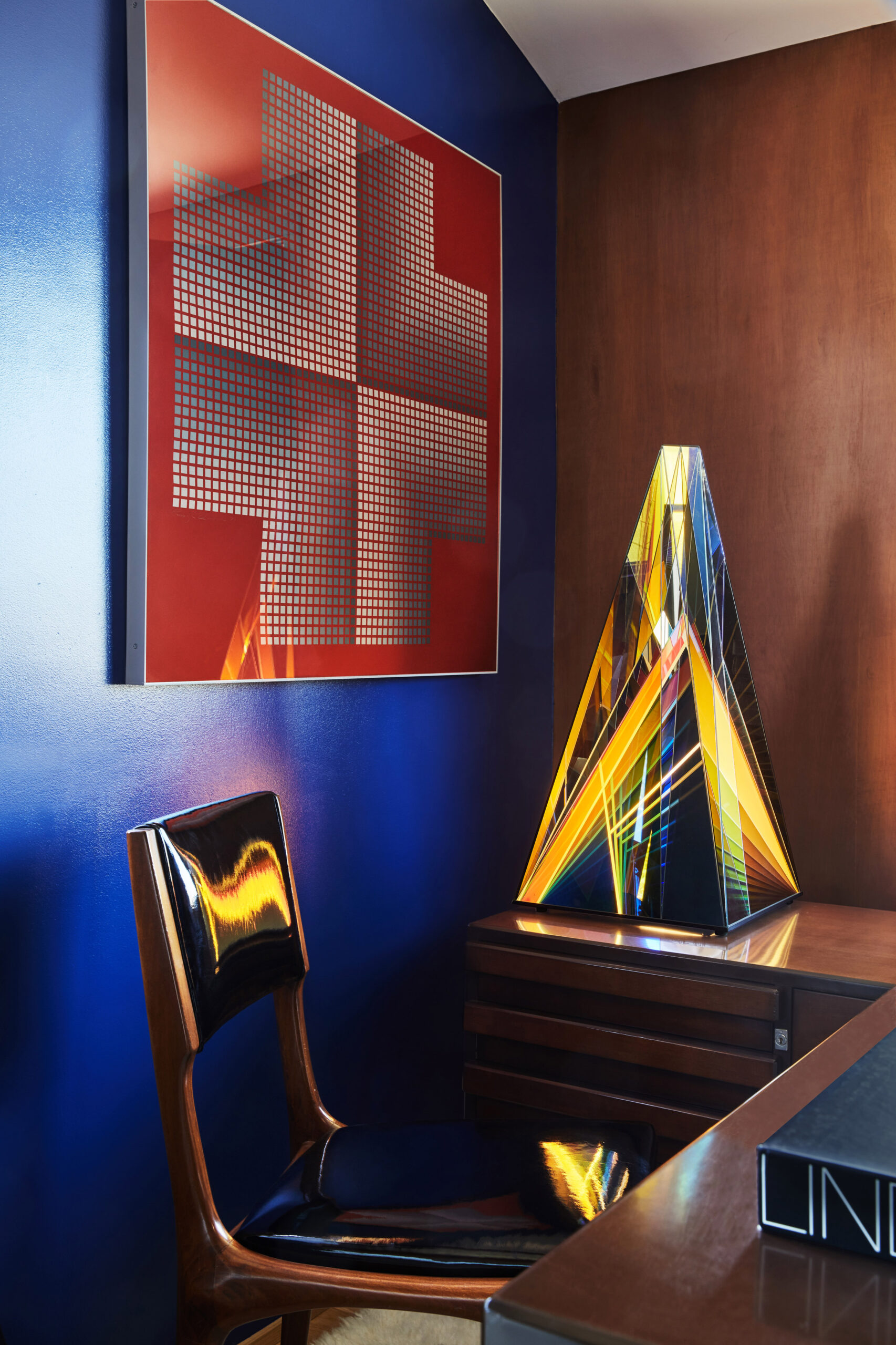
He designed multiple store interiors for the brand during this tenure, then when the Covid-19 pandemic hit, Tagliaferri made the decision to open his own interior design studio. Utilising the skills and connections he’d acquired at Oliver Peoples, the designer quickly amassed an enviable client list and was soon working on projects from Bel Air to Silicon Valley. “The possibility of experimenting with big budgets made us very financially stable from the beginning,” he revealed.
Unlike most Angelenos, Tagliaferri can walk 10 minutes to his workplace. Housed within a 1985 building, transformed into a home and studio for drummer Rob Brill in the early ‘90s by architect Wes Jones, the studio boasts a three-storey atrium with a gallery-style space on the ground floor, plus office areas above, and a terrace where the team can eat lunch and host events. It’s inward-looking, not unlike a Milanese palazzo, yet opens up to its surroundings as any typical Californian home might.
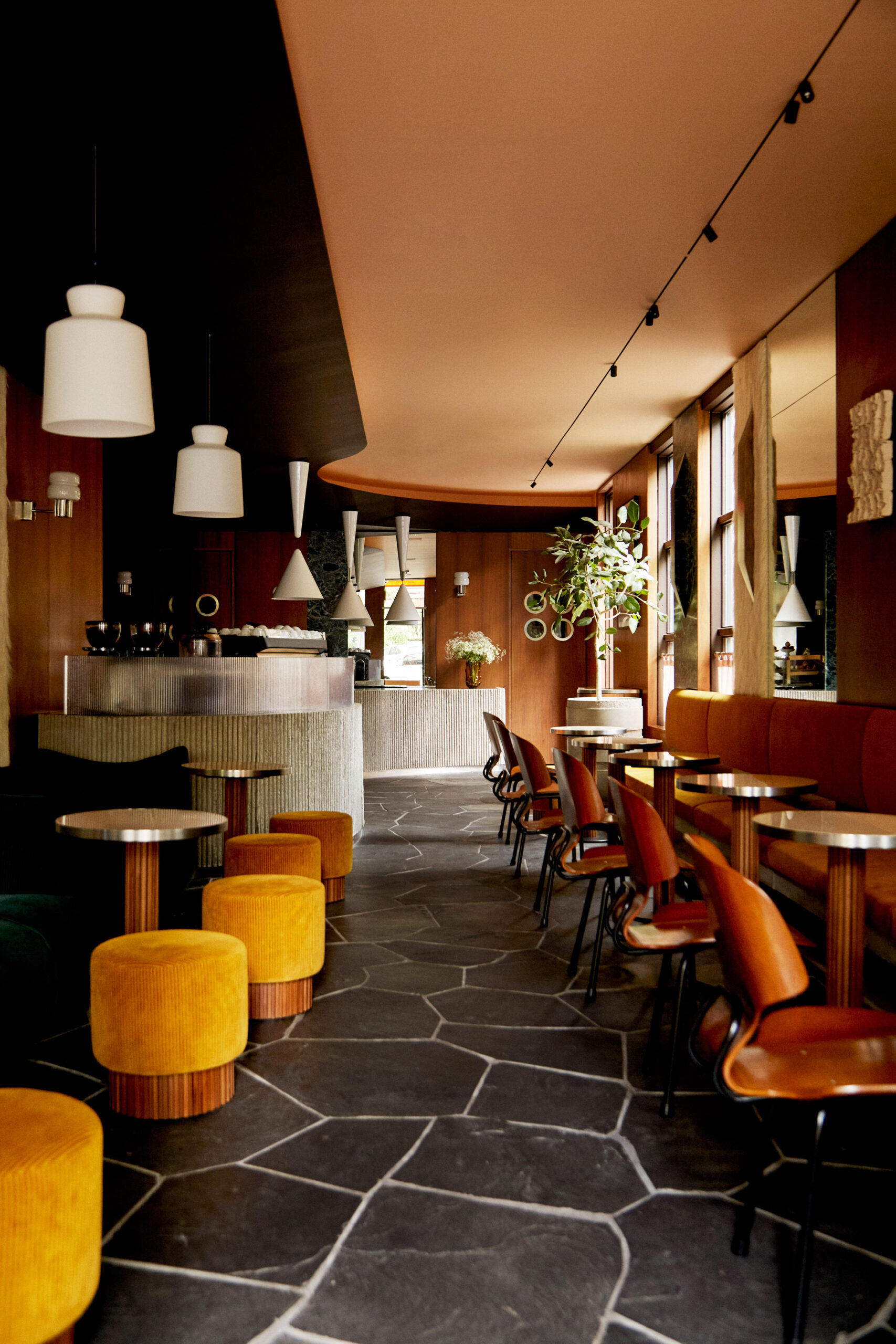
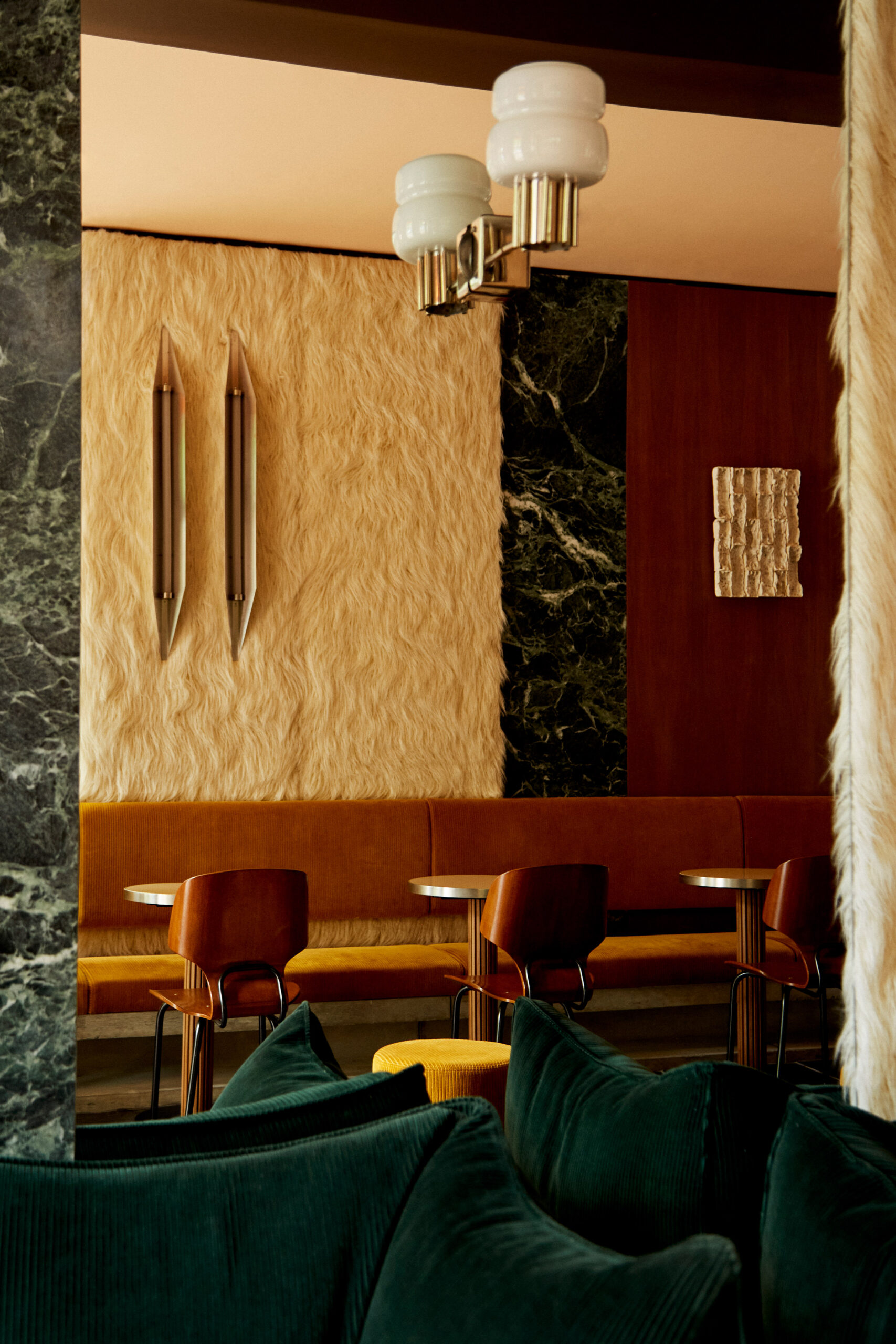

The dramatic atrium is used by Tagliaferri and his team to display a rotating collection of vintage furniture and collectible design, and also recently hosted an exhibition for Galerie Philia. Titled Materia Perpetua and on view to coincide with Frieze art fair earlier this year, the international gallery’s inaugural show in Los Angeles featured pieces from a variety of designers that were all crafted from onyx. Tagliaferri worked with the curatorial team to wrap the atrium space with full-height curtains in a similar creamy hue to the onyx, creating a “spiritual moment, into which you walk in and everything is very soft and very calm,” he described.
The designer also contributed a folding screen to the exhibition, made from three large angular slabs of the stone encased within a hinged metal frame. “For me it was really important to play with the main characteristic of onyx: the translucency of the material,” Tagliaferri explained. “I really wanted to design a piece that, if you have a light behind, you see the veins of the materials. And again, it‘s very brutalist because of the angles.”
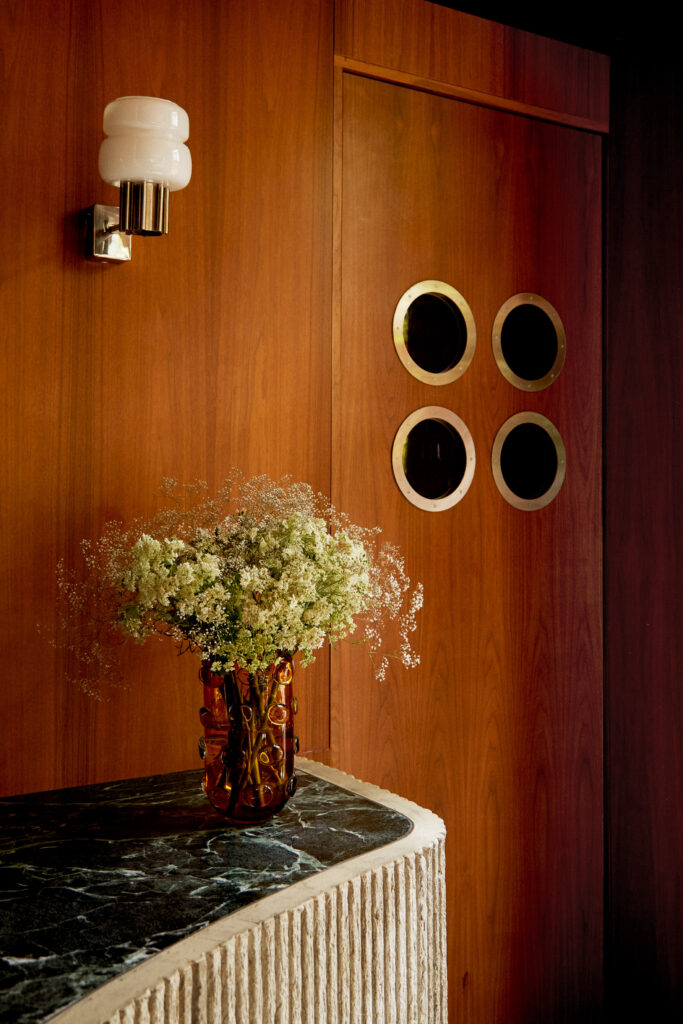
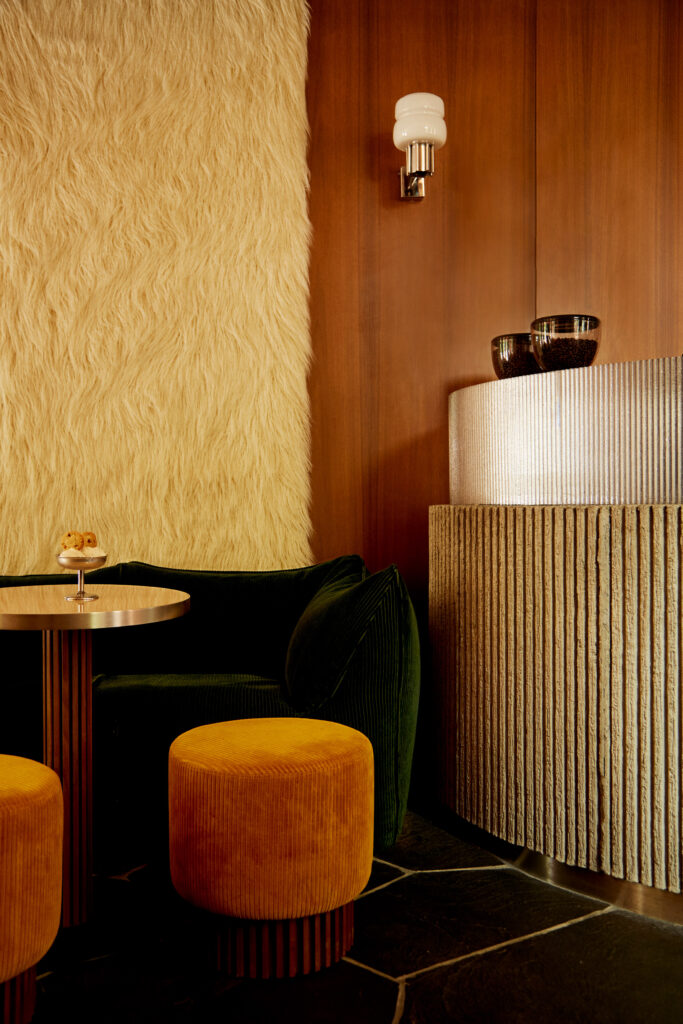
Many of Tagliaferri’s completed residential projects to-date have been kept under wraps due to client privacy. But a breakout moment for the designer was the unveiling of his cafe for Italian group Sant Ambroeus in Aspen, Colorado, in June 2023. The first space to be completed as part of an ongoing collaboration—a restaurant in the town is due to welcome customers this summer—the cafe is designed as a spin on the brand’s Milanese heritage. “Sant Ambroeus has a specific aesthetic that is very chic and classic,” Tagliaferri said. “But I wanted to do something a little bit different in the mountains.”
The cafe interior combines Italian materials like Verde Alpi marble and walnut panels, along with a variety of vintage and contemporary furniture from designers including Mario Bellini and Carlo Ratti, but with a Brutalist twist reminiscent of Alpine resorts such as Marcel Breuer’s Flaine and Charlotte Periand’s Les Arcs. Cream-toned Mongolian lamb faux fur, yellow corduroy upholstery and flagstone flooring also add to the melange. “We’re experimenting with a new aesthetic for the mountains,” said Tagliaferri.
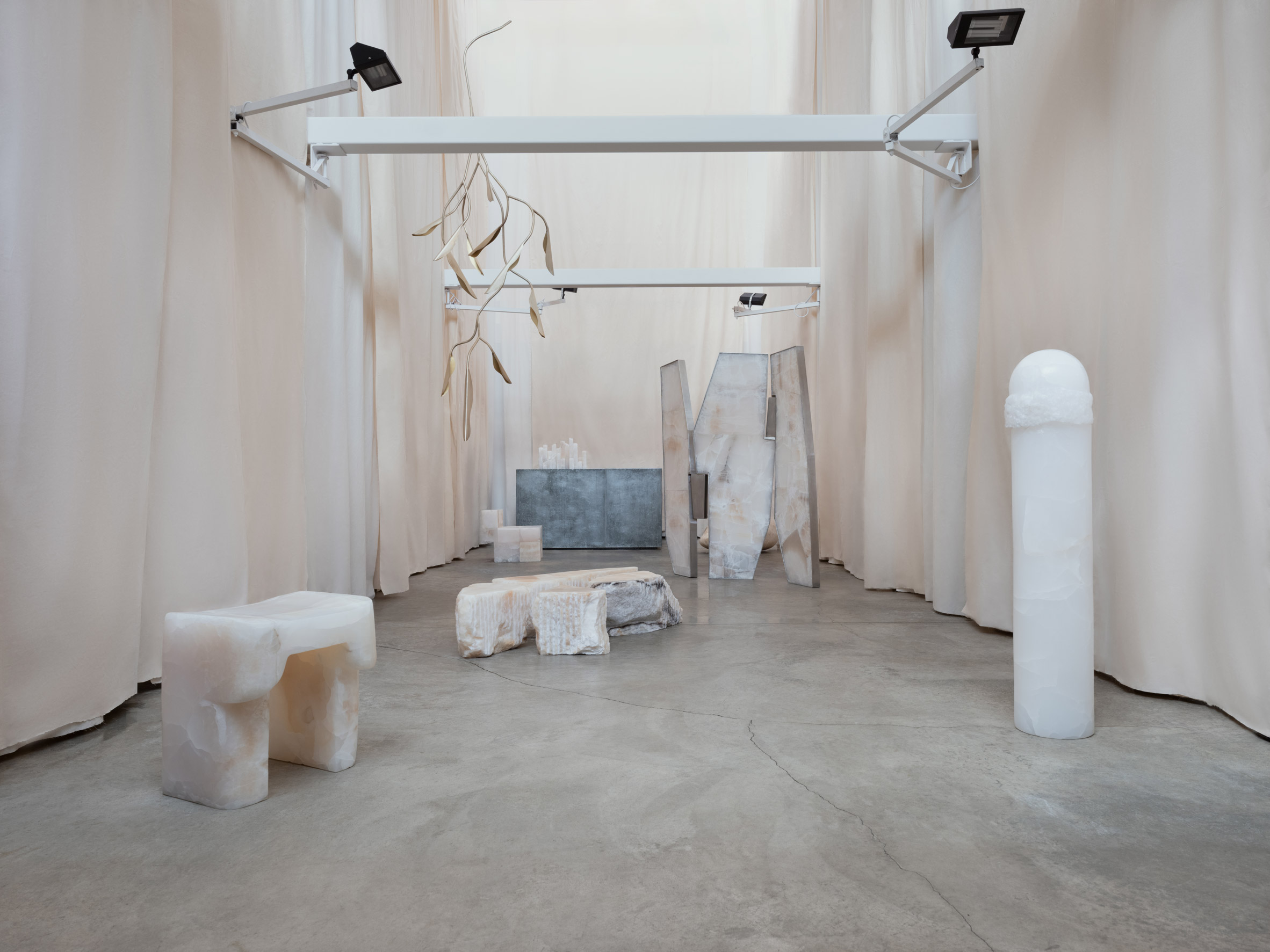
In his own Silver Lake home—a renovated 1939 residence designed by Rudolph Schindler protégé E. Richard Lind—the designer has been equally playful, mixing and layering pieces from various design movements over the past century. Brightly lit, redwood-panelled rooms are filled with furniture by Italian luminaries including Gae Aulenti, Osvaldo Borsani, and Ettore Sottsass, as well as several pieces by Brazilian modernist Oscar Niemeyer, and a sprinkling of contemporary designs—all part of a collection that Tagliaferri is steadily amassing from dealers across Europe, South America and the U.S.
Among his personal favourites in the home are a rare couch from Brazil that was only in production for three years, between 1969 and ‘72, and a Senufo African bird sculpture that he acquired because it reminded him of a similar piece that Gae Aulenti placed in the Olivetti store she designed in Paris in the late 1960s.

The blending of eras and styles in Tagliaferri’s home echoes the wider approach taken by his studio, which last year expanded to a second office in Milan. Combining the sensibilities from the two very different yet seemingly connected cities, the designer believes, resonates more clearly with “a more global world, where rules apply less when we are so exposed to everything all at once.”
It’s evident that LA’s outward-facing approach has had a lasting impact on Tagliaferri’s eye, particularly its collection of modernist houses in which he shot multiple campaigns for Oliver Peoples. “It was wonderful to scout all of the houses, to meet the owners, and to be able to be part of this subculture of Modernism lovers in LA,” he said. But Milan’s treasure trove-like quality is also never far away in his work, either. The combined influence of both locations is compounded by actively working between teams in each, creating a wonderfully iconoclastic viewpoint that will no doubt see Tagliaferri’s practice continue to push dichotomies far into the future.
Read more: Design | Interior Design | Italy | Los Angeles | Milan | USA



